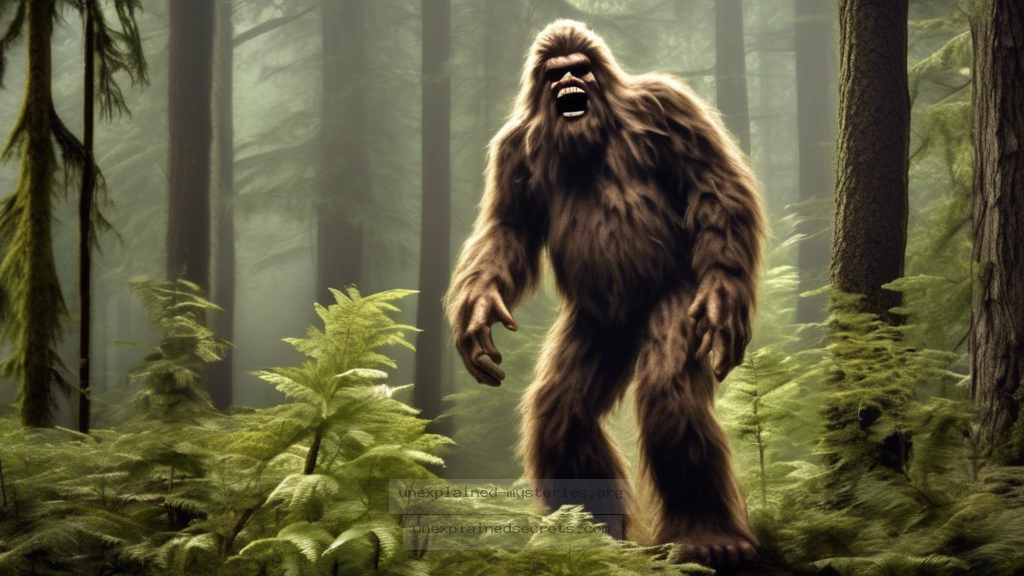What Is the Most Compelling Evidence Supporting the Existence of Bigfoot?
What Is the Most Compelling Evidence Supporting the Existence of Bigfoot?
The legend of Bigfoot, often described as a large, hairy humanoid creature roaming the forests of North America, has intrigued both enthusiasts and skeptics for decades. The question of whether Bigfoot exists is not merely a matter of folklore; it raises important discussions regarding evidence, witness accounts, and the cultural significance of cryptids. In this blog post, we will explore the most compelling evidence supporting the existence of Bigfoot, examining various forms of data, historical accounts, and the implications of ongoing research.
Historical Context of Bigfoot Sightings
The concept of Bigfoot can be traced back to indigenous cultures; various Native American tribes have long spoken of a large, hairy man-like creature inhabiting the wilderness. These stories often blend mythology with observations of strange beings. The name “Sasquatch” itself originates from the Halkomelem word “sásq’ets,” which means “wild man.” In the 20th century, the modern fascination with Bigfoot was ignited by the 1958 discovery of large footprints in Bluff Creek, California, by logger Jerry Crew. This incident, coupled with the release of the famous Patterson-Gimlin film in 1967, solidified Bigfoot’s place in popular culture and sparked a surge in interest and investigations.
Core Concepts: What Constitutes Evidence for Bigfoot?
When discussing evidence for Bigfoot, it is essential to define what qualifies as compelling proof. Evidence can be categorized into several types:
- Physical Evidence: Footprints, hair samples, and feces.
- Photographic Evidence: Videos and photographs of alleged sightings.
- Audio Evidence: Recordings of vocalizations attributed to Bigfoot.
- Eyewitness Accounts: Testimonies from individuals claiming to have seen the creature.
While all these categories contribute to the body of evidence, the challenge lies in verifying their authenticity and ruling out alternative explanations.
Physical Evidence: Footprints and Hair Samples
One of the most significant types of physical evidence is large footprints. In many documented cases, footprints measuring up to 24 inches long have been found in remote areas. The most famous example is the “Patterson-Gimlin trackway,” where numerous prints were cast and analyzed. These prints exhibit features consistent with bipedal locomotion but are distinct from known animal tracks.
Hair samples attributed to Bigfoot have also been collected, with some being subjected to DNA testing. In 2014, a study by Dr. Melba Ketchum claimed to have found human DNA sequences in hair samples, suggesting a possible hybrid origin. However, this study faced criticism regarding its methodology and peer review process, highlighting the ongoing debate over the validity of such findings.
Notable Fact: The Patterson-Gimlin film remains one of the most analyzed pieces of evidence in Bigfoot lore, with experts divided on its authenticity.
Photographic Evidence: The Patterson-Gimlin Film
The Patterson-Gimlin film is arguably the most iconic piece of photographic evidence supporting Bigfoot’s existence. Filmed in 1967, it shows a large, upright figure striding through the woods. Although many have attempted to debunk the footage as a hoax, proponents argue that the film has not been convincingly replicated, and the creature’s anatomy appears too complex for a man in a costume.
Since then, numerous other photographic claims have surfaced, ranging from blurry images to more recent smartphone captures. While these may not have achieved the same level of notoriety, they contribute to the ongoing dialogue about Bigfoot. Critics often point out the lack of clarity or the ease with which images can be manipulated in the digital age, which complicates their legitimacy.
Warning: Always consider the source of photographic evidence and be aware of the potential for digital manipulation.
Audio Evidence: The Sounds of the Wilderness
Audio recordings attributed to Bigfoot have been collected over the years, with some enthusiasts claiming to have captured distinct vocalizations that resemble none of the known wildlife. Notable examples include the “Sierra Sounds,” recorded in the 1970s by Ron Morehead and his team in the Sierra Nevada mountains. These recordings feature a range of vocalizations, including howls, screams, and chatter, which some researchers believe could be indicative of an unknown primate species.
While the authenticity of these sounds is debated, they add to the growing body of evidence. Acoustic analysis can reveal patterns and frequencies that might distinguish them from typical wildlife sounds. However, critics often argue that many of these recordings can be explained by known animals or even human pranksters.
Eyewitness Accounts: The Human Element of the Mystery
Eyewitness testimonies are perhaps the most compelling yet controversial aspect of Bigfoot evidence. Thousands of individuals have reported encounters, ranging from fleeting glimpses to close-range sightings. These accounts often share striking similarities in terms of the creature’s appearance and behavior. For instance, many witnesses describe a tall, hairy figure with a strong odor, often observed in remote, wooded areas.
Notable sightings include the 2008 encounter of a man named Todd Standing, who claims to have had multiple close encounters with Bigfoot in the Canadian wilderness. His videos and photographs have sparked debate within the cryptozoological community, with some praising his work while others remain skeptical of the authenticity of his claims.
Insight: Eyewitness accounts can be influenced by psychological factors, including the power of suggestion and the environment in which the sighting occurs.
Alternative Perspectives: Skepticism and Criticism
Despite the plethora of evidence presented by enthusiasts, skepticism remains a crucial component of the Bigfoot debate. Critics argue that many sightings can be attributed to misidentification of known animals, hoaxes, or psychological phenomena. The phenomenon known as “pareidolia,” where the mind perceives familiar patterns in random stimuli, can lead individuals to believe they have seen Bigfoot when in fact it is a trick of the light or shadows.
Moreover, the scientific community often demands rigorous standards for evidence that Bigfoot proponents have yet to meet. For many scientists, the lack of a body or definitive proof of the creature’s existence is a significant hurdle that casts doubt on the entire field of cryptozoology.
Common Misconceptions and Clarifications
Several misconceptions surround the Bigfoot phenomenon, leading to confusion among enthusiasts and skeptics alike. Here are a few clarifications:
- Bigfoot is not a single creature: The term refers to a category of sightings and experiences, suggesting the existence of multiple unidentified beings.
- All evidence is not equal: While some evidence, like hair samples, may seem compelling, others may lack scientific validity and should be critically analyzed.
- Belief in Bigfoot doesn’t equal ignorance: Many Bigfoot enthusiasts are well-educated individuals who approach the topic with curiosity and a desire for understanding.
Best Practices for Investigation and Study
For those interested in investigating Bigfoot sightings or conducting research in the field of cryptozoology, adopting a systematic approach is crucial. Here are some best practices:
- Document Everything: Always record your findings, including location, time, weather conditions, and any relevant observations.
- Engage with Experts: Collaborate with other researchers, wildlife biologists, and acoustic specialists to enhance the credibility of your work.
- Remain Skeptical: Approach the evidence with a critical eye, questioning your assumptions and seeking alternative explanations.
Future Developments and Ongoing Research
As technology continues to advance, the potential for discovering new evidence regarding Bigfoot has never been greater. Drones, thermal imaging, and sophisticated audio equipment enable researchers to explore previously inaccessible areas and capture data that might have eluded earlier investigators. Moreover, the integration of genetic testing could provide insights into hair samples and other biological evidence.
In addition, the rise of social media and online communities fosters collaboration among enthusiasts and researchers, allowing for the sharing of findings and experiences that could lead to breakthroughs in understanding this elusive creature.
Conclusion: The Ongoing Mystery of Bigfoot
The question of Bigfoot’s existence remains one of the most captivating mysteries in the realm of cryptozoology. While compelling evidence exists—from physical traces to eyewitness accounts—the debate is far from settled. Understanding the historical context, evaluating the evidence critically, and remaining open to new findings are essential for anyone interested in this enigmatic creature.
As research continues and technology evolves, the possibility of uncovering the truth about Bigfoot remains alive. Whether or not the creature is ultimately proven to exist, the journey of exploration and inquiry serves as a testament to humanity’s enduring fascination with the unknown.
Other Articles
Recent Posts
- What Happened to Flight MH370? The Conspiracy Theories That Still Haunt Us
- What Secrets Lurk Within the Walls of the Infamous Trans-Allegheny Lunatic Asylum?
- What Evidence Supports the Existence of Bigfoot in the Pacific Northwest?
- What Happened to the Indus Valley Civilization? Unraveling the Mysteries of Ancient Urban Life
- Can Telepathy Be Scientifically Proven Through Laboratory Evidence?







